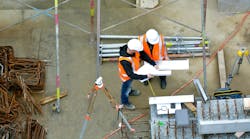Integrating various systems within a building is not a new topic; however, truly connecting them to drive increased value for owners and occupants is a new (and exciting) frontier.
The recognition of today’s building as an extension of an organization’s IT infrastructure – as part of the computer systems that run the business – follows the increasing, global adoption of the connected building. Once connected to all things digital, it is the building that transforms from a cost center, a simple fixed asset, to an asset of strategic and operational importance.
And that global adoption, along with those transformations, is happening now, thanks to a number of important advances in technology that are making it more conducive:
- the proliferation of mobile devices and related technologies, such as mobile-as-a-platform and mobile workforce systems
- the availability of low-cost bandwidth that accommodates real-time transmission of tremendous amounts of data all around the world and into the cloud and back
- the relative ease for providing technology services through low-cost cloud infrastructures and platforms
- the new affordability and flexibility of cloud- and container-based app development through microservice design
- the increased edge-computing capabilities supported by powerful gateways paired with smaller, more powerful devices
- the proliferation of low-cost, low-power sensors with long battery life
- the wide adoption of Bluetooth® Low Energy technology for lightweight, low-power and wireless “last-mile” connectivity
These advances have created the ideal soil for the growth of the connected building, an operating system of sorts where sensors and controllable devices work together to mine and parse available data that is constantly being generated. That data is then used by employees, guests, patients, shoppers, passengers, etc., within any building to optimize and individualize their experiences.
Historically, since the 1980s, the use of a building as an operational asset was limited to the installation of building management systems (BMS) that, through select protocols, helped organizations save energy by upgrading to controllable lighting and/or HVAC systems. Today, building-management technology has evolved to the point of changing an organization’s entire value stream as companies find new uses for the broad spectrum of data made available by connectivity.
For example, building and business managers rely on the connected building to manage their physical spaces, reduce operating costs, develop new products and services, and promote a more productive workforce. And, hospitals, retailers, airports, hotels, etc., are finding new ways to connect with their customers and improve the overall on-site experience. As another example, today’s younger workforce calls for seamless and engaging experiences that only ubiquitous connectivity can provide. Attracting this demographic as employees or customers requires speaking their language and providing them with tools for making their lives digitally fluid.
The 3-30-300-dollar[i] model of energy, space and workforce costs per square foot is accurate but incomplete. What’s missing is the fact that when a building is connected, productivity is optimized. New business opportunities can be pursued. So, owners and facility managers can potentially add another 10 factor, realizing, as the example goes, some $3,000 per square feet in additional revenue generated simply from the connected building. Connecting has the potential to impact every one of those metrics.
Go to Connected Buildings for more information, or Subscribe to receive updates directly to your Inbox.
Sponsored by:




